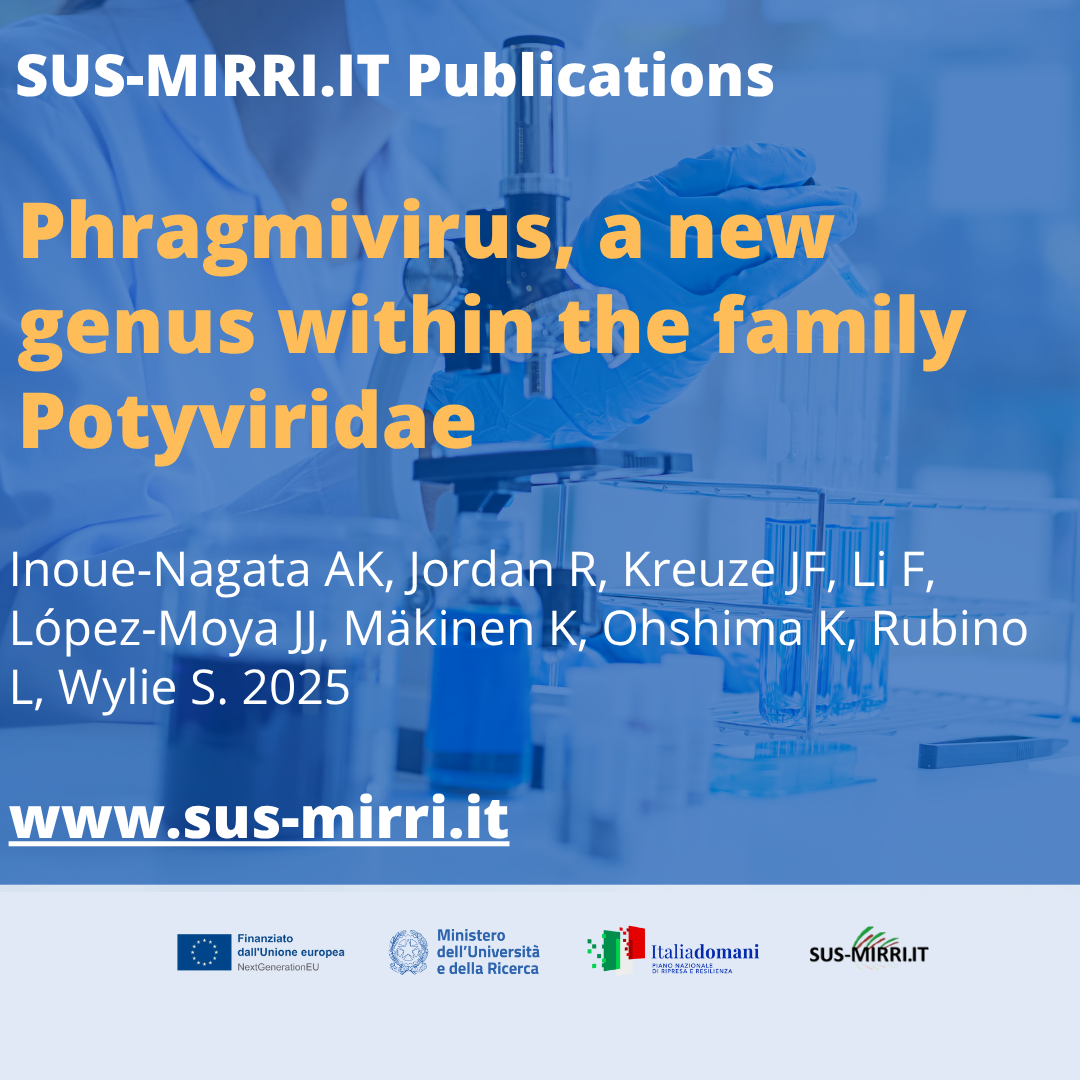Inoue-Nagata AK, Jordan R, Kreuze JF, Li F, López-Moya JJ, Mäkinen K, Ohshima K, Rubino L, Wylie S. 2025 Phragmivirus, a new genus within the family Potyviridae -Archives in Virology 170 165 https://doi.org/10.1007/s00705-025-06354-x
Abstract
The plant-infecting virus family Potyviridae was previously formed by 12 genera, consisting of 249 virus species, with the majority of these classified in the largest genus, Potyvirus. Potyvirids are viruses with a ssRNA genome packaged in long filamentous particles. While members of the genus Bymovirus have bipartite genomes, members of the remaining genera have monopartite genomes. All viruses in the family have a genome-linked protein (VPg) present at the 5’ terminus of the genome, and all but celery latent virus (genus Celavirus) have a polyadenylated tail at the 3’ end. The members of the 12 genera are differentiated by genomic sequence identity, various functional motifs, and biological factors such as the type of the transmission vector and host range. Demarcation criteria for a new genus include < 46% nucleotide sequence identity to potyvirids of other genera. Here, we report the new genus Phragmivirus within the family Potyviridae, which has been accepted by the International Committee on Taxonomy of Viruses, becoming the 13th genus in the family. The genus Phragmivirus is represented by two virus species (Phragmivirus phragmii and Phragmivirus spartinae). Complete genome sequences are available for both members, namely, common reed chlorotic stripe virus (CRCSV) and Spartina mottle virus (SpMV), respectively. The new genus name is derived from the botanical name of the host of CRCSV, Phragmites australis. The genome sequences of CRCSV and SpMV isolates resemble those of members of the genus Potyvirus but lack typical conserved aphid-transmission motifs.
Read more at: https://link.springer.com/article/10.1007/s00705-025-06354-x



